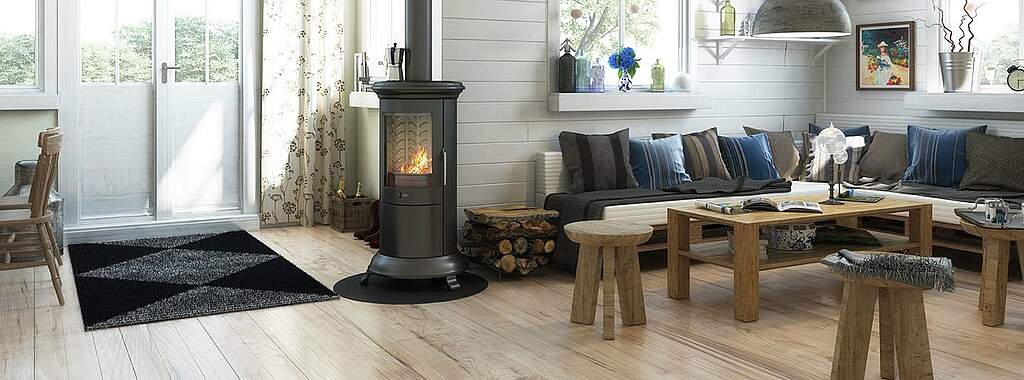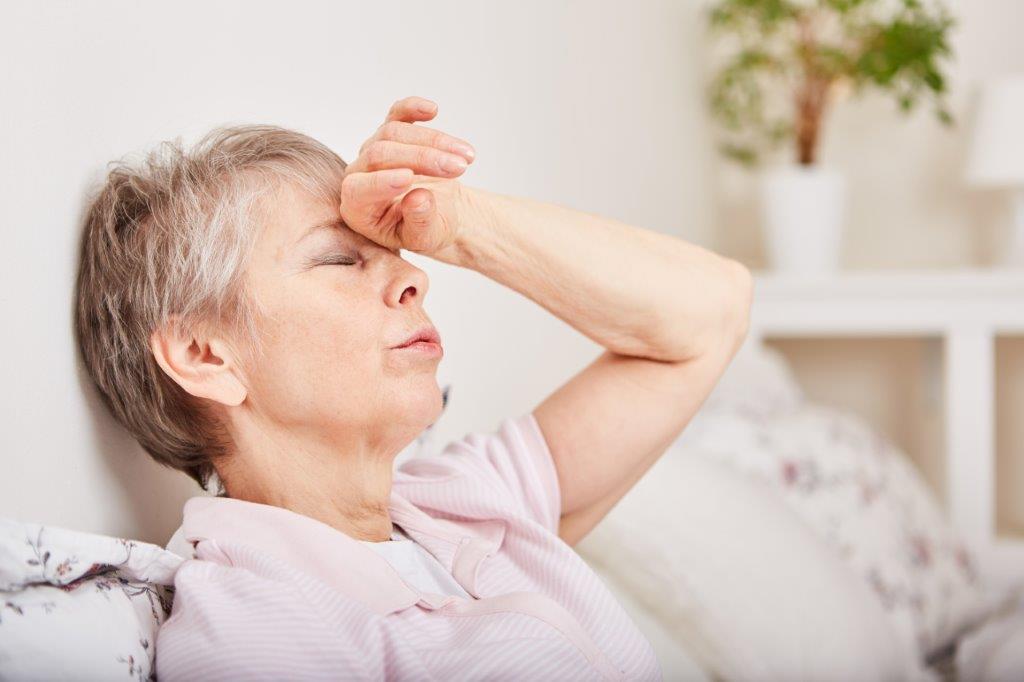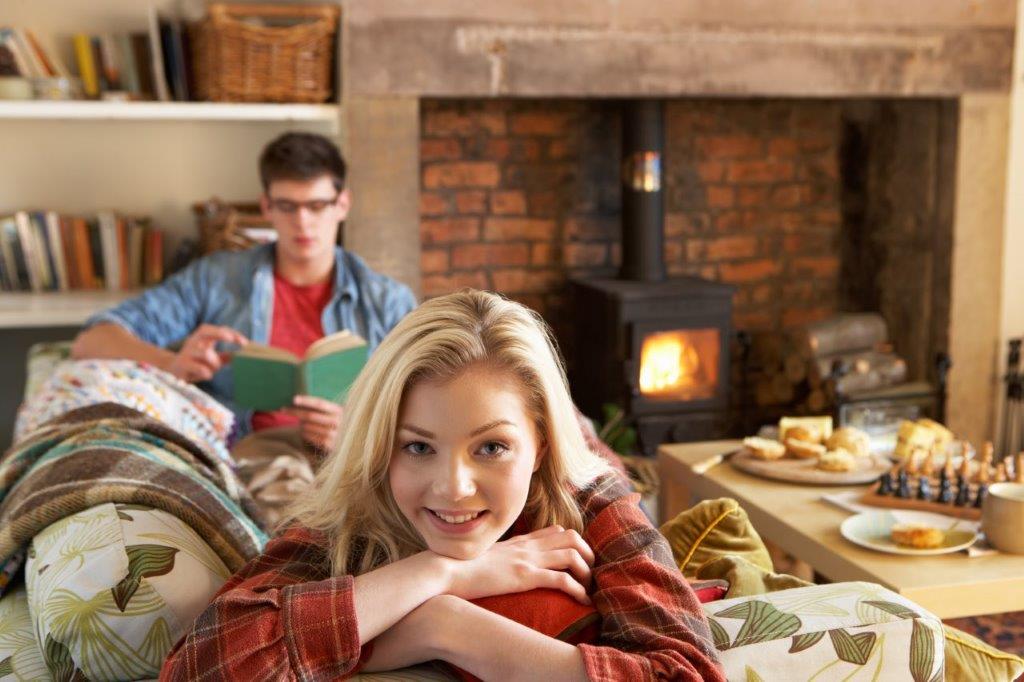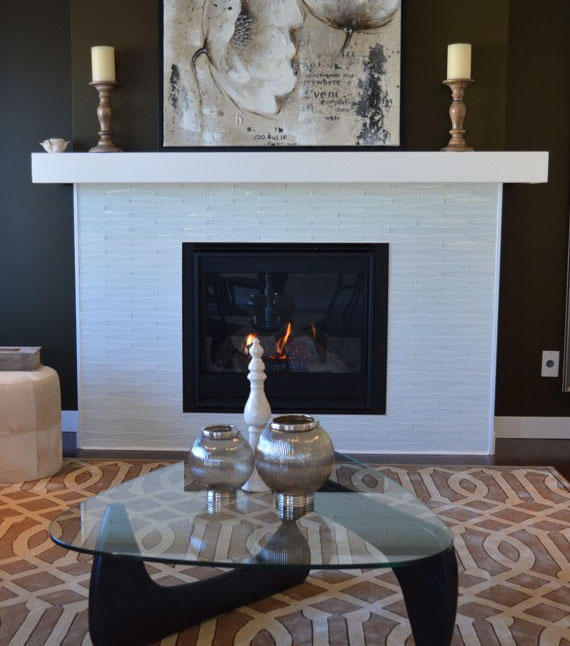Regulated air conditions for chimney and ventilation
Fireplace stoves are very popular because their blazing fire ensures relaxation and cozy warmth. A fireplace also looks really chic. So it is no wonder that the stoves are increasingly at the top of the wish lists of building owners. However, there are special requirements to be considered if you have a ventilation system or are considering installing one. The connection between chimney and ventilation, if done incorrectly, can present risks – precisely when negative pressure arises in the room. A chimney can enrich the air in the room with carbon monoxide. The reason for this is the different physical modes of operation of ventilation and chimney. Therefore, careful planning is recommended to you. The best thing to do is to consult ventilation system builders, chimney manufacturers and chimney sweeps. The chimney sweep in particular decides which measures should be taken to ensure the safe operation of fireplaces with ventilation systems.
Advisory topics:
- Room air-independent fireplace vs. room air-dependent fireplace
- Health effects
- Installation rules for chimneys and ventilation systems according to DIN 1946-6
- Safety device: pressure monitor for ventilation system
- Unterschiede zwischen zentralen und dezentralen Lüftungsanlagen im gleichzeitigen Kaminbetrieb
- Conclusion: chimney and ventilation - this is how they work safely

Room air-independent fireplace vs. room air-dependent fireplace
Wood-burning stoves need a sufficient supply of air for efficient combustion of wood, coal or pellets. There are two installation variants for this:
In the case of a fireplace that is independent of the ambient air, the air is supplied from the outside via an extra connection. This is done, for example, via a so-called air-exhaust chimney, which leads the air from the chimney to the chimney in an extra duct. The fireplace also has an outside air seal and tight, self-locking doors that prevent pollutants from escaping, even if there is negative pressure. If you want to be sure that your fireplace meets these standards, choose a device that is certified by the Deutsches Institut für Bautechnik (DIBt). Specifically, this means that the fireplace has DIBt approval.
In room air-dependent models, the air for the combustion of the fuel is taken from the room in which the fireplace is located. You do not need an external connection for the air supply, you can install the chimney on a common flue pipe connection.
Health effectsHow the combination of a room-air dependent fireplace and ventilation system can lead to carbon monoxide poisoning
If a room air-dependent fireplace is operated together with a ventilation system, it can happen that the ventilation system sucks more air out of the room than flows in. This creates negative pressure. Since air seeks the easiest energy balance, the chimney reverses its flow direction. This means that smoke gases can get into the living space. There is a lack of air and an accumulation of carbon monoxide can be the result.
Carbon monoxide is odorless, tasteless, invisible and therefore extremely treacherous. In addition, there are unspecific physical symptoms such as headache, dizziness, nausea, irritability and drowsiness. We often do not suspect carbon monoxide poisoning behind this. Carbon monoxide prevents the body cells from being supplied with sufficient oxygen. The body suffocates from within, so to speak.

You feel breathless, you may get cramps and you lose consciousness. Until then, there is little time and action must be taken quickly. Emergency doctors treat such poisoning with high-dose oxygen, which kicks the carbon monoxide out of the bloodstream.
Installation rulesfor chimneys with a ventilation system according to DIN 1946-6
But it shouldn’t get that far. That is why there are installation rules for the joint operation of the fireplace and ventilation system, which are laid down in supplement 3 of DIN 1946-6 – Ventilation of residential buildings. Supplement 4 shows examples of installation options.
The rule is: If a room air-dependent fireplace is operated with a ventilation system, the differential pressure between the open air and the installation room must not exceed 4 Pascal. A differential pressure of up to 8 Pascal is permissible for a fireplace that is independent of the ambient air. In doing so, the installer can use calculations or measurements to prove that the permissible differential pressure is being adhered to.

The following scenarios are possible for the safe operation of ventilation and chimney:
The ventilation system and chimney are not operated together
A safety device (e.g. pressure monitor) ensures safe joint operation of a chimney with a ventilation system

Safety devicePressure switch for ventilation system
A possible safety device for operating the chimney and ventilation at the same time is a DIBt-certified air pressure monitor.
It switches off the ventilation system in the event of a negative pressure until the pressure conditions in the room are equalized.
The pressure monitor measures the pressure in two different ways, depending on the model: In the first variant, it compares the pressure of the outside area with that of the inside area. These pressure switches can be active all the time or only when the fireplace is blazing.

In the second variant, the pressure switch compares the room pressure with the pressure inside the chimney. He only works when the fireplace is on. Other pressure switches only become active when the chimney is burned. To prevent incorrect measurements and incorrect shutdowns.
If the pressure monitor registers irregularities, it automatically switches off the ventilation system. This means that no negative pressure can arise through the ventilation. The pressure switch is checked and approved by the chimney sweep. In this way, you meet the legal standards and the devices run perfectly coordinated with one another.
differencesbetween central and decentralized ventilation systems in simultaneous chimney operation
In winter, when the ventilation system is running in frost protection mode, some central ventilation systems convey more warm air out of the room than can flow through the system. For the operation of the chimney and ventilation, this means that the air pressure stabilizer starts up more frequently and the ventilation stops more quickly.
One advantage that decentralized fans have when heating the fireplace at the same time is that they are usually operated in pairs. This ensures a balanced air volume flow between the supply and exhaust air. The pressure monitor only steps in in an “emergency” when there is a need to pause the ventilation.
ConclusionChimney and ventilation - this is how they work safely
If you want to operate a room air-dependent chimney with a ventilation system at the same time, an air pressure monitor must be installed that switches off the ventilation system when the pressure drops below 4 Pascal.
If you have a fireplace that is independent of the ambient air, it can be operated together with a ventilation system if the fireplace has been checked for leaks by the DIBt. In addition, the differential pressure may not exceed 8 Pascal. You can prove mathematically or metrologically that this is observed.
In the end, the chimney sweeper who releases the fireplace has the last word.
Do you have a fireplace and are planning to retrofit a ventilation system? Or do you want to install ventilation and chimney at the same time? Talk to the inVENTer ventilation experts. They advise in detail and find a suitable solution for you.


